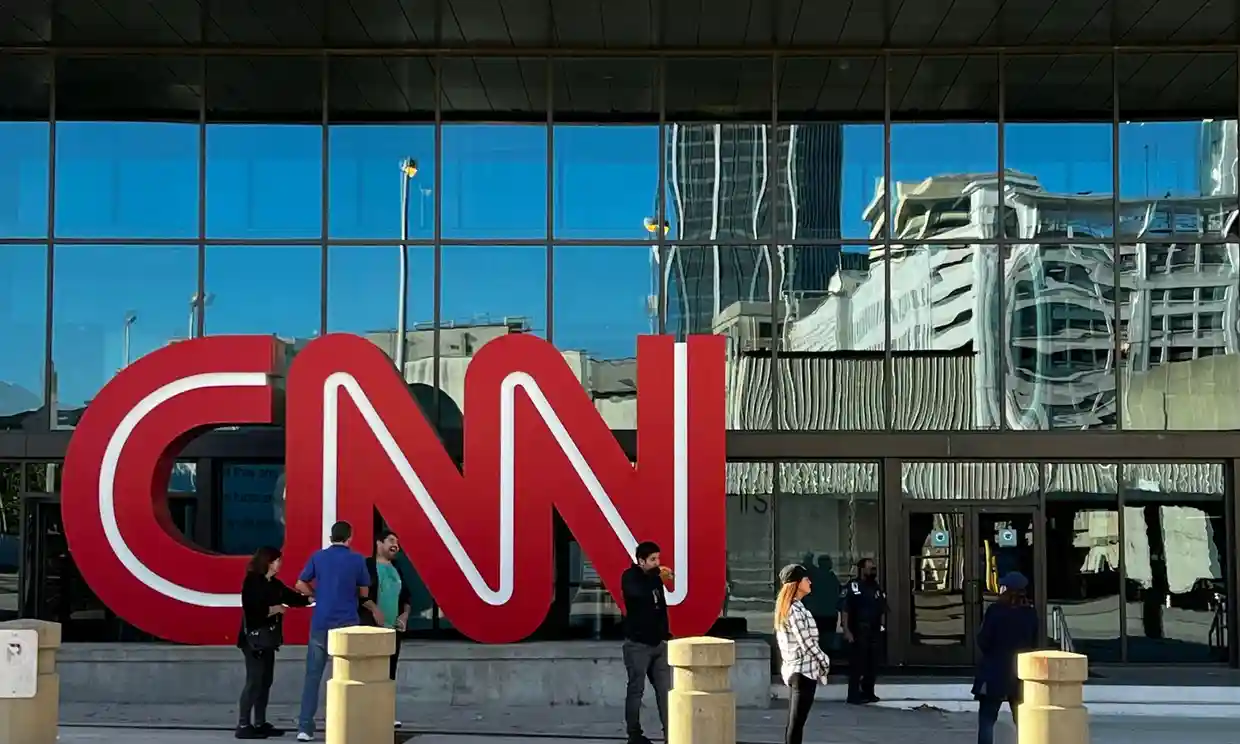
This article is more than
3 year oldConcern as US media hit with wave of layoffs amid rise of disinformation

A wave of layoffs have hit the beleaguered American media industry as several major companies, including CNN, BuzzFeed and Gannett, have laid off hundreds of workers in recent weeks citing economic volatility and uncertainty.
The job losses are the first major slate of cuts since the beginning of the pandemic, when a handful of companies laid off workers over the unpredictability of Covid’s impact on the economy. As the economy rebounded with the introduction of the Covid vaccine in 2021, the news industry saw the lowest number of layoffs in years.
But this year, after inflation rose to historic highs and the Federal Reserve hawkishly raised interest rates to temper it, many media companies have started conducting layoffs, triggering fresh worries over the health of the US media at a time of democratic crisis and the rise of disinformation.
In recent weeks, multiple media execs have pointed to uncertainty in the economy as the impetus for restructuring.
CNN’s chief executive, Chris Licht, in October hinted that layoffs were to come, saying that there were “widespread concerns over the global economic outlook” affecting long-term planning. CNN on 30 November started laying off hundreds of workers in several areas of the company.
Though it is unclear exactly how many employees have been laid off, some high-profile staffers such as the political reporter Chris Cillizza and on-air host Robin Meade were cut. Part-time analysts like journalists Susan Glasser and Jonathan Martin, who offer commentary on the network’s shows, were also removed from the roster, with CNN saying that it is “shifting our approach to paid contributors”.
In a memo to staff, Licht said that the layoffs “are necessary and will make us stronger and better positioned to place big bets going forward without fear of failure”.
This is the second round of layoffs the company conducted this year after it shelved its $100m streaming platform CNN+ just three weeks after its debut, affecting 350 employees.
BuzzFeed staffers heard similar sentiments from their CEO, Jonah Peretti, when the company announced it would let go 12% of its workforce – about 180 staffers – on 6 December. The announcement caused the company’s stock to hit an all-time low at $1.06 a share.
“In order for BuzzFeed to weather an economic downturn that I believe will extend well into 2023, we must adapt, invest in our strategy to serve our audience best and readjust our cost structure,” Peretti said in a memo to employees.
BuzzFeed has struggled in the year after its December 2021 stock market debut. In the week after trading, shares fell 40%. Investors pushed Peretti to shutter BuzzFeed News altogether, and though the company kept its news division, several top editors still left the company.
In an SEC filing, the company said the company is undergoing an “ongoing audience shift to short-term, vertical video, which is still developing from a monetization standpoint”, alluding to the popularity of TikTok video content.
Gannett, the country’s largest newspaper publisher that owns USA Today and several major local papers, laid off 200 employees at the beginning of the month.
“While incredibly difficult, implementing these efficiencies and responding decisively to the ongoing macroeconomic volatility will continue to propel Gannett’s future,” a Gannett spokesperson told the Poynter Institute.
Other companies that have laid off employees include Outside Inc, video news startup The Recount, the Washington Post – which cut the entire staff of its Sunday magazine – and Protocol, a tech-focused publication. NBCUniversal, the parent company of NBC News and MSNBC, and Disney, which owns ABC News, have both suggested company-wide layoffs will be coming in the near future.
While the media industry has experienced waves of layoffs over the last decade, with newsroom employment falling 26% since 2008, the tech industry has largely been seen as an endless flow of cash and opportunity. But the last several months have seen thousands of employees laid off by Meta, Amazon and Snap as the companies try to cut down on costs, including in marketing.
Morning Brew, a business newsletter, said it will cut 14% of its staff, about 60 employees. The company’s CEO, Austin Rief, said in a memo to staff that “there is a lot of fear and uncertainty among companies around the world.
“The first budgets cut are often those in marketing, and we’re seeing many of the largest ad-based businesses – such as Alphabet, Meta and Snap – see cuts in their revenues. Morning Brew is not immune to the movements of the ad market.”
Nancy Dubuc, CEO of Vice Media, said in mid-November the company was cutting costs by 15% and will be “identifying areas that are no longer a core part of our creative and business mission”. The company had already laid off about a dozen employees in early November as part of consolidation efforts.
“We’re not immune to the commercial pressures of the current economy including ongoing cutbacks by brands and advertisers,” Dubuc said in a memo to staff.
Even while some companies are experiencing layoffs, the labor market as a whole is still tight: the US added 263,000 jobs in November and had an unemployment rate of 3.7%.
While that will probably change as the country heads into the winter, signs of resiliency still remain, even in the media industry. The New York Times, for example, announced in November that the company added 180,000 new digital subscribers and increased its profit forecast. In turn, employees of the newspaper’s 1.400-member union held a walkout on Thursday after the paper refused to negotiate, among other things, pay increases.



